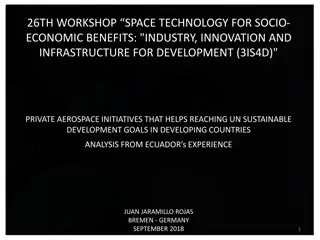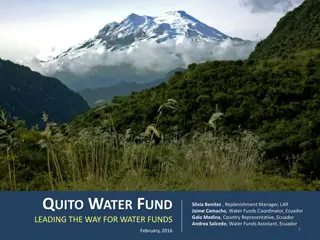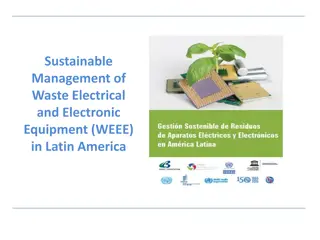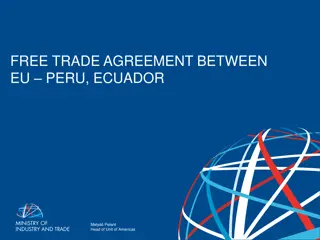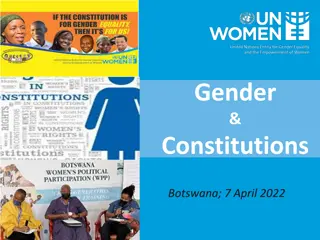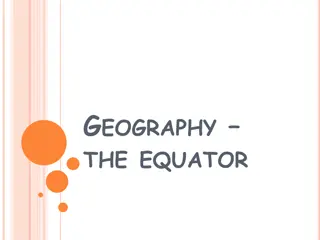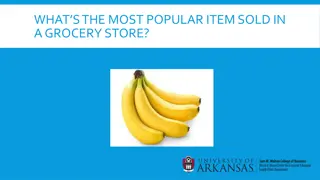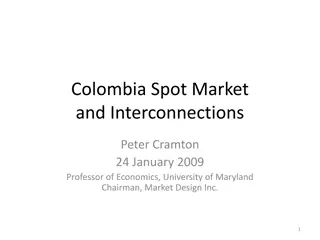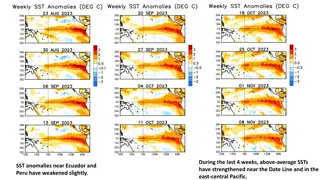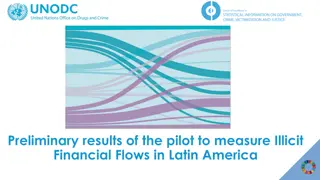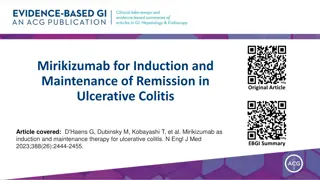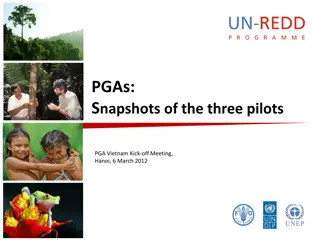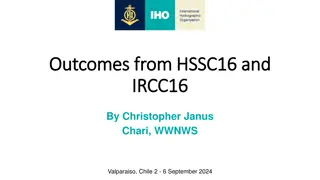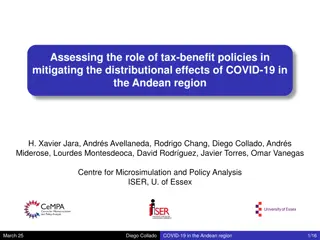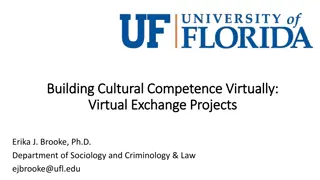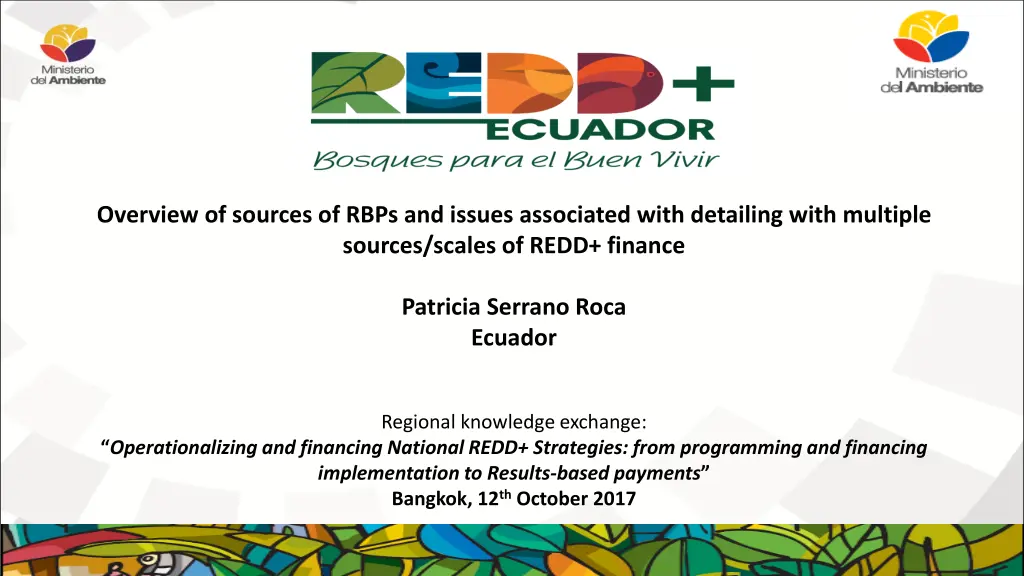
Ecuador's Progress on REDD+ and International Financing
Explore Ecuador's achievements in REDD+ implementation, including the completion of requirements for results-based payments and efforts to secure additional finance through international channels. Learn about the Integrated Amazon Program contributing to climate change mitigation and biodiversity preservation.
Download Presentation

Please find below an Image/Link to download the presentation.
The content on the website is provided AS IS for your information and personal use only. It may not be sold, licensed, or shared on other websites without obtaining consent from the author. If you encounter any issues during the download, it is possible that the publisher has removed the file from their server.
You are allowed to download the files provided on this website for personal or commercial use, subject to the condition that they are used lawfully. All files are the property of their respective owners.
The content on the website is provided AS IS for your information and personal use only. It may not be sold, licensed, or shared on other websites without obtaining consent from the author.
E N D
Presentation Transcript
Overview of sources of RBPs and issues associated with detailing with multiple sources/scales of REDD+ finance Patricia Serrano Roca Ecuador Regional knowledge exchange: Operationalizing and financing National REDD+ Strategies: from programming and financing implementation to Results-based payments Bangkok, 12thOctober 2017
CONTENT Ecuador s Progress so far on REDD+ The GCF call for proposals: key features UNFCCC REDD+ reporting key features The challenge of reporting to the UNFCCC
Ecuadors Progress so far on REDD+ Ecuador is the second country in the world to complete all the requirements to receive results-based payments for REDD+ set out in the UNFCCC (second only to Brazil). Ecuador has submitted a FREL to UNFCC in 2014 which was revised in october 2015: http://redd.unfccc.int/files/2014_december_frel_submission_ecuador.pdf Ecuador has developed a National REDD+ Action Plan: http://suia.ambiente.gob.ec/web/suia/redd Ecuador has sent a summary of Information of Safeguards on march 2017: http://redd.unfccc.int/files/ecuador_first_sis_summary.pdf In 2016, Ecuador submitted a REDD+ Technical Annex as part of this Biennial Update Report in which it reported emission reduction of over 28 MtCO2 over the period 2008-2014 (4.8MtCO2/year): http://unfccc.int/national_reports/non- annex_i_natcom/reporting_on_climate_change/items/8722.php
Ecuadors Progress so far on REDD+ In 2018 Ecuador hopes to secure additional finance from the international community in the form of Results-Based payments from REDD+ once modalities to provide such payment are defined under the GCF. http://redd.unfccc.int/info-hub.html
Ecuadors Progress so far on REDD+ The Integrated Amazon Program for Forest Conservation and Sustainable Production in Ecuador was launched on September 7th and 8th in Tena, Ecuador. A video recording of the event is available here. Implemented under the umbrella of the National REDD+ Action Plan, the main objective of the program is to reduce greenhouse gases emissions from deforestation, which represents 30% of emissions in Ecuador. The plan provides a coherent package of policies and measures to address the drivers of deforestation as well as improve land use efficiency in the Amazon. The program will contribute to mitigate climate change and therefore to Ecuador s Nationally Determined Contribution under the Paris Climate Agreement. It will also contribute directly to the protection of Ecuador s rich biodiversity and key ecosystem services, providing social and economic benefits to local communities.
The GCF RFP and UNFCCC Reporting By the time of submission of a Concept Note, the following information related to UNFCCC requirements, including the elements reflected in decision 1/CP.16 paragraph 71, should be in place and made publicly available (e.g. on the UNFCCC REDD-plus web platform): The National REDD-plus Strategy or Action Plan; FREL/FRL that is applied to the results period for which payments are requested are submitted to the UNFCCC and have undergone the Convention s Technical Assessment of FREL/FRL; National Forest Monitoring System (i.e. description provided in the BUR Annex); A safeguards information system (SIS) to inform how the safeguards are addressed and respected, and a summary of information on how all the Cancun REDD-plus safeguards were addressed and respected during the time period for which payment for results is being requested.
The GCF RFP and UNFCCC Reporting GCF will accept for consideration the results from a country s BUR REDD-plus annex starting in 31 December 2013 (time of adoption of the Warsaw Framework for REDD+) until 31 December 2018 that have been technically assessed through the UNFCCC process. Proposals can be submitted up to 2022 Countries can submit proposals multiple times until 2022
The GCF RFP and UNFCCC Reporting Ecuador submitted its FREL in 2014. It is planning for an update in 2020 Ecuador submitted its first BUR REDD+ Technical Annex in 2016. For the eligible year of 2014, Ecuador has 4,831,679 tCO2 of results reported which are eligible for Results-Based payments Ecuador is planning to submit additional results through its BUR REDD+ TA in 2018, 2020 and 2022. Following this tight reporting schedule is a major challenge for Ecuador. Much work will have to be done to institutionalize reporting process to the UNFCCC.
The GCF call for proposals: key features Access modality: RBPs will be channeled through accredited entities (AEs) of the GCF. Ecuador is exploring the possibility of working with UNDP for RBPs in the short term. In the long run a national accredited entity should channel RBPs Financial valuation of results: fixed price of USD 5/tCO2 eqis suggested for the pilot programme. Size of the RFP: USD 500 million for the pilot programme.
The GCF call for proposals: key features Double payment: control policies such as registries for double payments Ecuador plans to use the UNFCCC REDD+ info hub Use of proceeds: reinvest the proceeds in activities in line with countries NDCs or REDD+ strategies. Demonstrate alignment with the Investment Framework criteria and reporting on GCF environmental and social safeguards standards (ESS). Ecuador plans to reinvest all proceeds into the policies and measures of the National REDD+ Action Plan
The GCF call for proposals: key features Ownership, legal title and implications on NDCs: no transfer to the GCF and should be retired. Pending further decisions under the UNFCCC, possibility to use emissions reductions achieved toward NDCs. Ecuador s constitution (art. 74) would not allow the creation of title to emission reduction and its sale so this decision is favorable for Ecuador.
The GCF call for proposals: calculation of payments Step 1: AEs proposes a volume of achieved ERs to be considered for the pilot programme Step 2: The volume of ERs offered is translated into GCF volume of ERs applying the equation below, based on the scores of sections a) and b) of the Stage II Scorecard elements (see Annex III). The resulting GCF volume of ERs should not exceed 30% of the maximum payable volume of ERs per country in the entire period of eligible results : Volume of ERs offered (X) Total score achieved = GCF volume of ERs Maximum score Step 3: The resulting volume will be translated into payments by multiplying the GCF volume of ERs and the fixed value of USD 5 per tonne of carbon dioxide equivalent (CO2).
The GCF call for proposals: calculation of payments Step 1: for 2014 Ecuador has achieved 4,831,679 tCO2 ERs which can be offered to GCF Step 2: The volume of ERs offered will be translated into GCF volume of ERs by multiplying by Ecuador s score on the scorecard. We are still unclear what this score will be. The maximum GCF volume of ERs is 4,831,679 tCO2 ERs Step 3: The resulting volume will be translated into payments by multiplying the GCF volume of ERs and the fixed value of USD 5 per tonne of carbon dioxide equivalent (CO2). For Ecuador this means 4,831,679 tCO2 ERs X 5 USD = max payment of 24M USD NB: it is unlikely that Ecuador will score 100% on the scorecard and therefore the payment that Ecuador can claim for 2014 results will be smaller.
Conclusions Ecuador is among the worlds leading countries on REDD+ reporting to the UNFCCC (second only to Brazil) This give Ecuador an head start to participate in the GCF call for proposals for results-based payments However the total volumes or REDD+ results from the 2016 BUR which will be eligible for GCF payments is small It is critical for Ecuador to keep reporting results in its 2018, 2020 and 2022 BURs as well as to make some improvements to achieve a better score.


